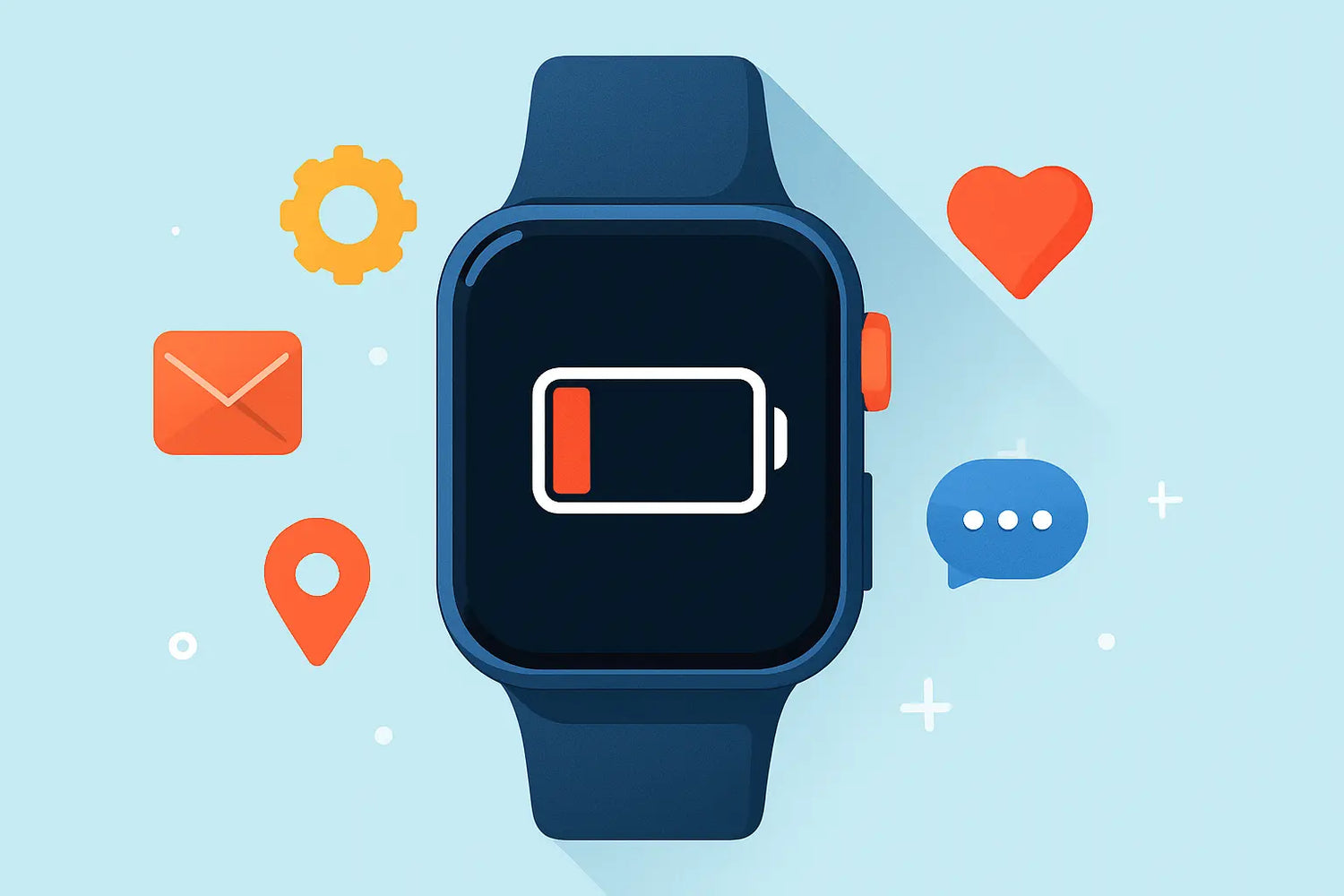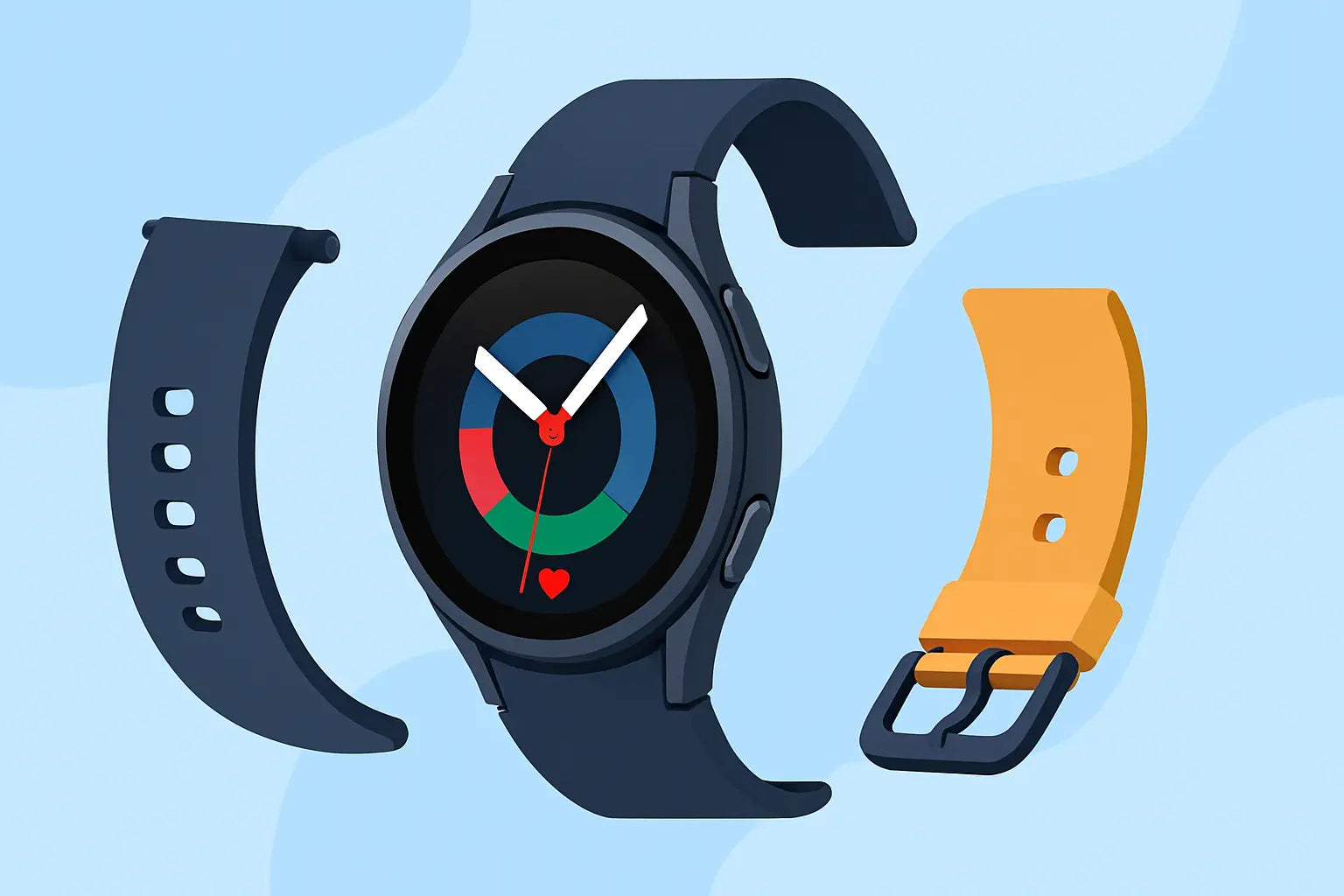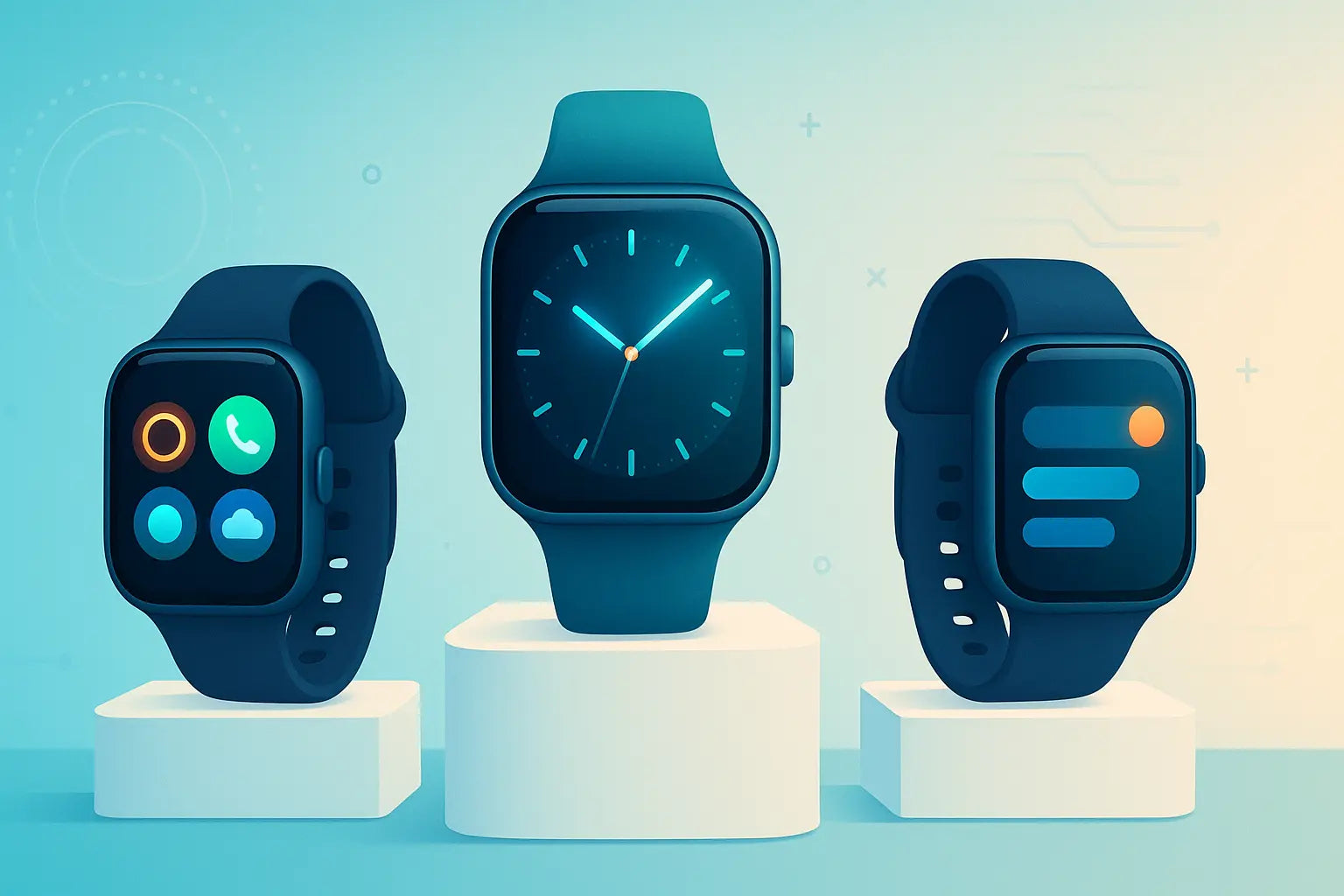The most common reasons your smartwatch battery is draining fast are excessive screen brightness, continuous GPS usage, many background apps, and outdated software. Battery wear over time also impacts longevity, especially in older models.
Why does my smartwatch battery drain quickly?
Smartwatches are power-intensive devices with multiple sensors, always-on displays, and continuous connectivity features. A smartwatch performs several background functions that steadily consume energy. These include syncing notifications, GPS tracking, Wi-Fi, Bluetooth, and even heart rate monitoring.
High screen brightness and display features
The display is usually the biggest power drain on most smartwatches. If your screen is set to maximum brightness or the 'always-on display' is enabled, your battery will drop rapidly. Adaptive brightness settings can help extend battery life significantly.
Background apps and constant notifications
Unnecessary apps running in the background consume valuable battery. Every alert, vibration, and notification wakes up the processor, drawing more power. Smartwatches syncing multiple app notifications also see faster battery drainage.
Frequent use of GPS and mobile connectivity
Using GPS for workouts, maps, or location sharing can be a major battery killer. Cellular-enabled watches also use 4G or LTE, which needs more power than Bluetooth or Wi-Fi. Activities like outdoor running with GPS tracking can deplete your watch by 30% in an hour.
How can I improve my smartwatch battery life?
Improving battery life starts with small changes in device settings and usage habits. Some quick adjustments can make a noticeable difference in your wearable's longevity. Below are some strategies to conserve energy during daily use.
Optimise screen settings
- Lower screen brightness
- Disable always-on display
- Use darker watch faces
Dark themes use less power on OLED screens, common in Apple and Samsung smartwatches. You can explore power-efficient watch faces to further extend battery life. Disabling gestures like "Raise to Wake" also saves power.
Limit background tasks and connections
- Turn off unused radios
- Limit notification syncing
- Close unused background apps
Connections like Bluetooth, Wi-Fi, or LTE shouldn't run simultaneously unless required. Disable unnecessary health tracking like continuous heart rate monitoring if battery savings are critical. Battery saver modes can help significantly extend lifespan on a single charge.
Battery performance: Smartwatch comparison
Below is a comparison of battery life among popular smartwatch models under typical usage:
| Smartwatch Model | Average Battery Life | Battery Life with GPS |
|---|---|---|
| Apple Watch Series 9 | 18 hours | 6 hours |
| Samsung Galaxy Watch 6 | 30 hours | 8 hours |
| Garmin Forerunner 265 | 15 days | 20 hours |
| Huawei Watch GT 4 | 14 days | 25 hours |
Does software affect battery performance?
Yes, outdated software and firmware bugs often negatively impact battery life and efficiency. Most smartwatch brands release updates that include battery optimisation patches. Keeping your device updated ensures you're getting peak performance and the latest battery management features.
Check for operating system updates regularly
Smartwatch OS updates may include sleep optimisation, better background task management, or improved tracking algorithms. Apps designed for older versions may also perform poorly on newer devices, increasing power drain. Always restart your device after applying firmware updates to reset system services.
Uninstall unused or power-hungry apps
Monitoring tools like a built-in battery monitor can flag apps using excessive energy. Uninstall widgets or complications on your watch face that frequently update. Removing apps you don't use can dramatically extend battery life.
Environmental factors play a role
Extreme outside temperatures can affect your smartwatch battery efficiency. High heat causes batteries to degrade faster, while cold conditions temporarily reduce available charge. Avoid leaving your watch in direct sunlight or extremely cold environments.
Charging habits and battery health
Li-ion batteries degrade over charging cycles. Partial top-up charging rather than 0 to 100% cycles can slow down wear. If you doubt your battery health, contact the manufacturer or local service for assessment or a replacement.
Improve longevity with wearable accessories
Using quality charging cables and storage accessories can extend your smartwatch’s life. Investing in protective Apple Watch accessories prevents screen-on triggers from accidental bumps or wake-ups. Elegant wearables like Apple Watch straps can also prevent overuse by making it feel more comfortable.
Frequently Asked Questions
Can you replace a smartwatch battery in the UK?
Yes, many authorised service centres and third-party repair shops across the UK offer smartwatch battery replacements. Prices vary by brand and model.
Does Bluetooth drain smartwatch battery?
Bluetooth alone consumes minimal power but syncing notifications and calls over Bluetooth can be draining. Turning off Bluetooth when not used can help minimise wastage.
Why is my smartwatch overheating and losing battery?
This usually indicates too many background tasks or poor software performance. Excessive heat and fast battery drain may result from a faulty app or outdated firmware.
Should I turn off my smartwatch overnight?
If you're not tracking sleep, turning off your smartwatch can help preserve battery. Alternatively, use a “Do Not Disturb” or Battery Saver mode to limit functions overnight.
Conclusion
The answer to “why is my smartwatch battery draining so fast” lies in how you use and set up your device. High screen brightness, continuous syncing, GPS use, and background apps are common culprits. With proper settings, periodic maintenance, and awareness of battery health, you can optimise your smartwatch to last longer on a single charge.




Leave a comment
All comments are moderated before being published.
This site is protected by hCaptcha and the hCaptcha Privacy Policy and Terms of Service apply.